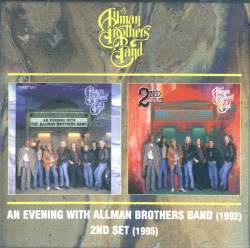
The Allman Brothers might have played the same songs night after night, but they were never played the same way twice. Their playing was a highoctane, explosive blend of eclectic styles that made each show completely unique, despite the fact that by July, the band had settled on a setlist that they rarely deviated from.

With Duane Allman's searing slide and lead lines, the melodic brilliance of Dickey Betts, Berry Oakley playing bass like a third guitar, Gregg Allman's distinct vocals and soothing B-3, and the dual syncopated drumming of Jaimoe and Butch Trucks, them sum total of the Allman Brothers Band was greater than the considerable talents of its individual parts. These guys truly played as they lived, and lived as they played. The crowd that day witnessed a band that was at the absolute height of spontaneous creativity, with music that ranged from loose, free-flowing jazz-like improvisation to whiskey-soaked blues, country swing to full blown rock-all of it delivered with a furious, right on the edge intensity. Accordingly, September 19th marked the first time the band would be playing SUNY Stonybrook as a headlining act, and they would not disappoint. Their seminal live album, At Fillmore East, had sold over 500,000 copies, and Rolling Stone would soon run a full-length feature on the group-the entire country was becoming aware of the Allmans. Certainly, much had changed for the ABB in those ensuing eleven months.

It was the band's fifth trip to SUNY-their first coming in April, 1970, and the most recent had been the previous October 23rd.

On September 19th, 1971, the Allman Brothers Band rolled into Stonybrook, New York, a coastal hamlet on the northern shore of Long Island, to perform at the State University of New York campus.


 0 kommentar(er)
0 kommentar(er)
